One of the best ways to improve your bottom line with shopify increase conversion rate. So many marketers are obsessed with getting more traffic.
Logic dictates that if you can make $100 from getting 50 clicks then you will make $1000 from 500 clicks, right? You simply scale your traffic to scale your profits.
This is not a bad idea in most cases. If you get your traffic from SEO then this can be time consuming.
If you buy your traffic then this can be risky. You will soon find out that Facebook Ads does not always scale that consistently and that more traffic often means lower conversion rates.
It is often overlooked by markets but if you want an easy win, you simply have to increase your conversion rates. Lets crunch some numbers to illustrate just how effective this can be.
– We are selling a personalised dog bowl and make $13 profit per sale.
– Our CPC on Facebook Ads is $0.50
– 100 clicks cost us $50 (this is an average)
– Conversion rate on our Shopify Store = 2% (2.5% is the global average from 2018 stats)
– Every 100 clicks we make 2 sales = $26 (2 x $13 profit)
From this example, we are losing money to the tune of almost 50%. This is a common scenario on a lot of Shopify dropshipping stores.
There’s 3 ways we can fix this.
- Get cheaper traffic: This is possible but not always easy
- Increase profit: Either have to source the product cheaper or increase price
- Increase conversion rate: By far the easiest and smartest thing to do.
If we can increase the conversion rate to 4% we are almost at breakeven and if increase the conversion rate to 6% we make a nice profit.
If you are not seeing at least a 5% conversion rate on your Shopify store then you have some work to do!
To increase ecommerce conversion rate is both an art and a science. You can read a lot into the numbers but ultimately you need to understand your audience and that is where the art comes in. It is why brands like Dollar Shave Club or GymShark is so successful.
Lets look at how to increase conversion rate in eCommerce. Here are the 10 definitive elements that you can change to get your eCommerce store into the 5% – 10% conversion rates.
1. Product
Showing the right products, to the right audience at the right price is the golden formula for super high conversion rates. This triad is by far the biggest determining factor in how or how poorly your Shopify (or any other eCommerce) store will convert.

Showing your product to the “wrong” audience (or wrong segment of the audience) will lower conversions. You can also have a great and hungry to buy audience but your product may not be good enough to create the urge to buy.
Lastly, your prices could be too high or too low. Yes, too low can also be a problem because it can be perceived as less valuable.
How to fix this:
This depends on what is fixed in your eCommerce business. If your product is fixed, then start by looking for better and more targeted traffic. Google traffic tends to be the best because it has user intent and often people looking to buy.
If your traffic is fixed as is the case for many Facebook Advertisers, find a different audience – or segment of your audience.
Lastly, experiment with price. Lowering prices would be the obvious thing to test – especially if you see a low Add To Cart rate.
Increasing prices can also have a positive effect on conversion rates but this usually depends on the product and/or audience.
2.User Experience
According to recent studies, people form an opinion about your store within 3 seconds. Online shopping has moved out of the dark ages and if your store does not look GREAT, then your conversion rates will suffer.
The overall look and feel of your site needs to be incredibly professional with great images/videos and engaging copywriting. Most of all, the imagery, design and copywriting needs to speak directly to your ideal customer.

A store that sells kids toys will require a totally different style of imagery and copywriting than a store that sells make-up.
When you design your store you need to design for mobile first as most users will be mobile users. Do not get caught up in how your site looks when you design it on a desktop. Only 20% of your visitors will ever see that.
There are a lot of theories about the use of colours and many argue that this has no effect on conversion rates while others swear by the “Amazon Orange” for purchase buttons.
Its well worth testing colours but more than anything you want to have consistency on your store in terms of colour use.
How to fix this:
The first thing you should test is your store’s theme. To increase conversion rate ecommerce stores often spend too much time tweaking themes but testing a completely different theme can make a big difference. For Shopify Themes, stick to the Out Of The Sandbox themes. They are proven to work well and well optimized for mobile.
Make sure you have a professional logo, super high quality images and a coherent colour scheme throughout your store.
Simplify colours as much as possible and look at what the biggest competitors in your niche is doing.
Model that because it is most likely already successful.
3.Speed
Everyone has become incredibly impatient. Slow loading stores will not convert well. If your store takes more than 3 seconds to load, it will hurt your conversion rates beyond repair.
Ideally you want to keep your load speeds at around 1.5 to 2 seconds on your product pages..
A fast store gives a great user experience because it removes all frustration for your user. If someone has to wait for a page to load, they usually just click away. Sale lost!
Every second counts. If your product page takes more than 3 seconds to load it will reduce your conversion rate. According to Akamai’s study of more than 10 billion user visits across the top online retail platforms it found that 50% of mobile users will leave a site that takes more than 3 seconds to load.
This is CRUCIAL.
How to fix this:
If you are using Shopify, then you need to minimize the amount of apps you use – especially apps that inject a lot of code into your theme files. If you install and un-install a lot of apps then you need to make sure you remove all the code left behind by inactive apps (this is one of my big gripes with Shopify).
Starting with a new fresh install of your theme might also be necessary as that will ensure there is no unnecessary code. You might need to re-install some current apps though.
Also, look out for slow apps. Many free apps are free because they are crap and almost every time I saw an app that slowed my stores down they were free apps.
The easiest way with Shopify increase conversion rate is to compress the image sizes on your store.
If you have a lot of variants you can have a lot of images that slow down your load speeds. Use an app like Image Optimizer to compress your images.
Using a fast theme will also make a huge difference. Many themes try to “do it all” and have a lot of unnecessary elements. I recommend Turbo theme as it is probably the cleanest and fastest theme currently available for Shopify.
Use video and Gif images sparingly as the sheer file sizes can slow your store down significantly.
4.Trust
Although ecommerce has come a long way, many people still have trust issues when buying online. Some people have been burned – either by scammy store or by poor buying experiences.
For this reason people tend to think twice when buying from a store or a brand that they do not know and trust.
Building trust is not easy. It can take years for brands to gain trust. If you can not instill a sense of trust in your users then they probably won’t buy from you. Learning how to increase conversion rate in ecommerce is about learning how to create trust.
How to fix this:
Chances are that you do not have a few million to create branding campaigns. What you need to do is to “borrow” trust and incorporate that on your store.
Displaying trust badges is the easiest way to borrow trust from recognised brands and logos to transfer that trust on to your store.
There are a few apps that can help, but you can add trust badges to your Shopify store quite easily.
Be mindful to use constraint. You can overdo this – as many dropshipping stores have done. This can have the opposite effect and actually hurt your conversion rates.
Also, make sure you are consistent and include the trust badges all the way through from your product pages, to your cart and to your checkout.
5.Social Proof
This ties into trust but is actually beyond that. Social media has contributed heavily to this idea but people tend to look to others when making decisions.
This is especially true with buying decisions.
It is also why social influencers can command such high rates because their “endorsement” carries a level of social proof.
When everyday “normal” people talk positively about a product then people believe it. There is so much BS going on with endorsements that people are seeking advice from real people.
How to fix this:
If you sell great products and offer a great customer experience then chances are people will share that on social media. This is the first prize because you don’t need to do much. Make sure you add this to your store and advertising to share this with potential customers.
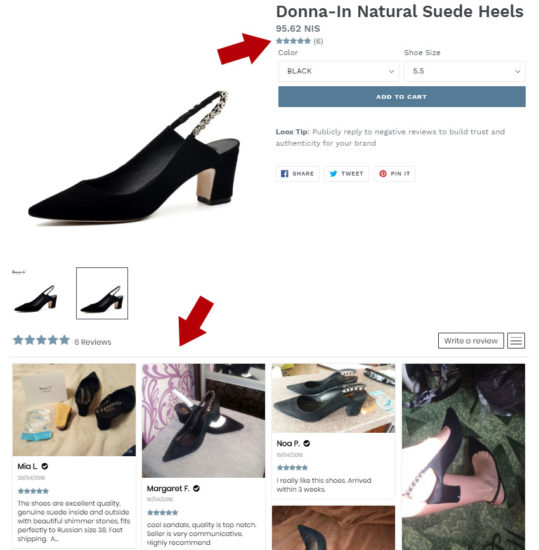
Using an app like Loox or Yotpo, you can share testimonials and reviews on your store’s product pages. This can have a huge impact on conversion rates because people can see this alongside your actual product page.
You can also use an app like Sales Pop. It will show small pop-ups of recently bought items. It usually shows the product with a message like “Amada from New York just bought a…”. These have become a bit spammy lately so use with caution. It can now also decrease conversion rates.
Pro Tip:
If you are dropshipping you can import reviews from AliExpress using the Loox app. So even if you’ve never sold a product before you can populate your product pages with user reviews and user photos.
6.Incentive
There’s a lot of competition in eCommerce and most of the time you want to give your customers a reason to buy. By offering a special deal you also tap into the psychology of selling. Why do people buy from you? Why should they buy from you?
If you can find a way to sweeten the deal and give people a reason to buy, they are far more likely to take action.
How to fix this:
Use sales and discounts sparingly. If everything on your store is on sale, then it just becomes noise. One or two carefully placed sales will make a huge difference in conversion rates.
A sale is not always the answer to increase conversion rates. Offering bundle deals or BOGO (buy one, get one free) deals can work incredibly well.
Not only does this push up your AOV (average order value) but it often encourages users to buy.
There are many great apps that can help you do this. I like CandyRack just because of the way it works and integrates. Quantity Breaks is also another great app that allows you to offer discounts for order bumps (buying more than 1).
Yet another way to offer incentives to increase your conversion rates is with Loyalty programs and free shipping goals.
7.Urgency
All people are inherently lazy at making decisions. When it comes to buying decisions it can be very easy to put it off. If your product pages does not create a sense of urgency, your users will simply click away and think “later”.
How to fix this:
One of the easiest ways to create a sense of urgency is to make sure your users feel like they have to buy now OR miss out. Any sale or promotion that you run MUST always have a deadline.
Deadlines help people make decisions.
You can use apps like Ultimate Countdown Timer that will add a countdown timer to your product page. This will add a deadline to your sale and make people feel like they have to act now.
A word or warning. These countdown times are frowned upon by many ad networks and can often look spammy. A simpler way is to simply add a deadline date or time to your special offer. Its more about how you do it than what you do.
8.Shipping
Shipping costs and other hidden costs are one of the biggest conversion killers. Amazon has set a new standard and many online shoppers now expect free shipping.
For many, they feel that paying for shipping is a rip-off and many people simply do not like the idea of additional charges for shipping.
Its a psychological issue more than a price issue. Its a principle more than a price issue.
How to fix this:
You can increase conversion rates on ecommerce stores by simply offering free shipping. If your pricing strategy does not allow for free shipping, consider building the shipping prices into your product prices.
It may result in higher product prices but the free shipping can increase conversion rates – even at the higher product prices. If you offer free shipping, show it everywhere on your site – especially with a bar at the top of the store.
There are also a few other strategies worth testing. You can offer free shipping over $XX – that way you can encourage people to spend a higher amount to qualify for free shipping.
This can be a great strategy to increase AOV as well.
A more controversial strategy is to offer free shipping but charge for faster shipping.
The controversy lies in the fact that many stores (especially dropshipping stores) charge for express shipping that is sometimes exactly the same as standard shipping.
Advertising standard shipping as slow will often encourage users to pay for shipping – but this can be a gamble and can decrease conversion rates.
If you do offer free shipping in any way, make sure you advertise it all over your store. Make sure people can see it and make it very prominent on your product pages.
9.Currency
One of the great things about ecommerce is that you have a global audience. You can sell to almost any country with relative ease. The problem is that global currencies can impact prices significantly.
The differences between the main currencies of USD, GBP and EUR can be quite significant. If you try and sell to Brits and all your prices are in USD, the first thing a user will think is “how much is that in GBP?”.
Often times the immediate response is that they click away. If you see low conversion rates on your Shopify store for countries outside your main currency then this will be huge for you.
Pro Tip:
Run a conversion report in shopify that shows your conversions by country. This will quickly show if this is a problem for you.
How to fix this:
The simple fix is to offer people the option to see prices in their local currency. Shopfy has recently opened up this option but it is still not available on all themes and can be a bit tricky to set up.
An easy option is to use the Bold Multi-Currency app. It is easy to set up and includes a little flag that immediately shows someone that they can see prices in their local currency.
10.Checkout
The checkout is where your store makes its money. It is also where most stores fail. The checkout is where your customer pulls out a credit card and give you their money. Nothing matters more any ecommerce store than this.
The Shopify checkout is notoriously cumbersome. It is a 3-step process that requires users to jump through a lot of hoops to complete a purchase. It is also the one part of a Shopify store that you can not customise much.
How to fix this:
If you want to learn how to increase conversion rate in ecommerce then look at what many of the big guns do with Clickfunnels.
Its usually quite an aggressive approach but the main lesson to learn is to reduce all friction at the checkout and make it REALLY easy.
Minimize the amount of steps and information a user has to put in at the checkout. This is especially true for mobile users. Manually entering your address and card details can be very slow.

While Shopify itself will not allow you to change any of this you can use some 3rd party tools that plug into Shopify. I Like Smarketly and Intercart. They both act just like Clickfunnels but integrates smoothly with Shopify.
Intercart has some great features that can help boost your conversion rates. One of them is language detection – allowing the cart to switch language based on a user’s location.
It allows you to have a 1-Page checkout on Shopify. It also allows you to add several conversion booting elements to your checkout page. A 1-page checkout can increase your Shopify store’s conversion rate dramatically.
Its not cheap but both offer a free trail that is more than enough to see if it works at increasing your conversion rate.
11.Cart Abandonment
It can be very frustrating when you see a lot of Add to Carts but low conversion rates on your store. When customers reach your checkout they often get cold feet – the result is that they abandon the cart and leave without purchasing.
The main reason for cart abandonment is “hidden costs” like shipping and taxes that was not clear to see on the product page.
How to fix this:
By recovering abandoned carts you can increase your conversion rates quite easily. Someone who has added to cart is already very interested in what you have to sell.
The most obvious solution is to start using a Shopify app like Abandonment Protector.

This will allow you to send an email sequence to anyone who has gotten far enough in the checkout process to leave an email (or even a mobile phone number – with sms follow ups).
By reminding people of their cart and offering further discounts you can recover up to 30% of these lost conversions. This can make a huge difference and boost your conversion rates.
Shopify also has their own cart abandonment sequences you can use and most email providers now also offer this.
12.Email
Email is still one of the most effective channels for ecommerce. Email traffic converts incredibly well simply because these are usually customers that either know, like or trust your store.
It is not uncommon to see 15% conversion rates on email traffic.
While email does not have a direct increase in conversion rates, it has a secondary effect in that you can convert the same customer multiple times..
If someone buys from you once, they are far more likely to buy from you again. Return purchases, upsells and cross sells can offer a huge boost to your conversion rates.
How to fix this:
If you do not have a post purchase email sequence set up then you need to start at once. Klaviyo and Omnisend are 2 great apps that you can use to help you automate your follow up sequences. It also has some very powerful features to help you segment your buys and target at very granular levels.
Email marketing is a big subject but even if you just keep it simple and follow up with your customers once a week for 6-8 weeks you can easily add an extra 20% to each order you get.